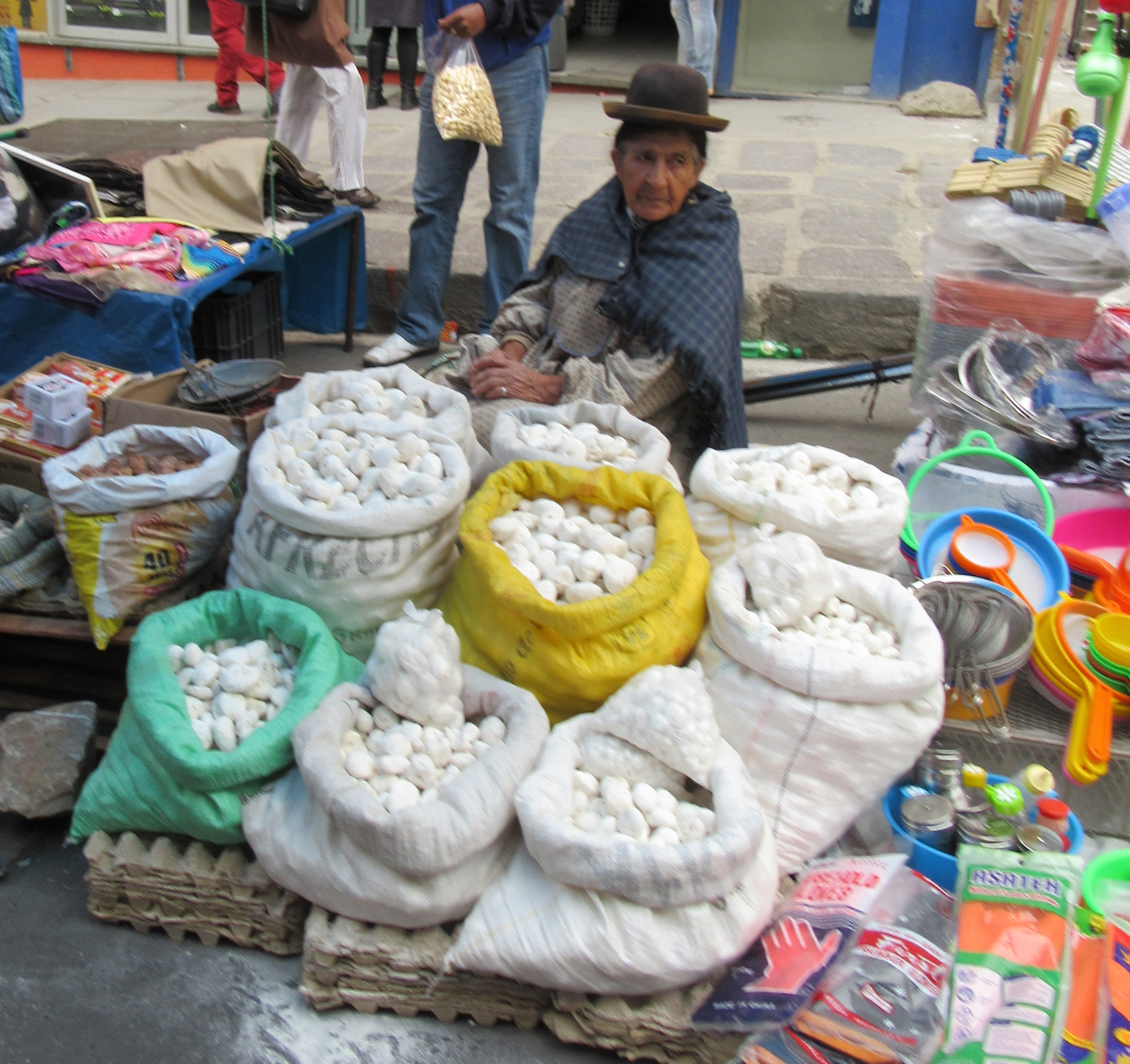
I sounded like a broken record during our two stays in the defacto capital of Bolivia: “I can’t believe that I love this town.” La Paz is dirty, massive and nothing works as it should. Never the less, I found myself drawn to this brown city in a crater. La Paz seems like it should have more than its two million people. My first sight of the city occurred while taking a bus down from the El Alto suburbs. The city shocked me. I felt as if I was teleport into science fiction; La Paz is a city trembling on a Martian crater. Nothing makes sense here; the skyscrapers in the center of the crater are dwarfed by the suburbs, ski gondolas take commuters across town instead of subways and massive women wear tiny bowler hats. There are very few capital “A” attractions in La Paz, although we couldn’t fit in all the things we wanted to do. As I was ducking trash and stray dogs, I couldn’t believe how much I was drawn to this city that was trying so hard to repel me.
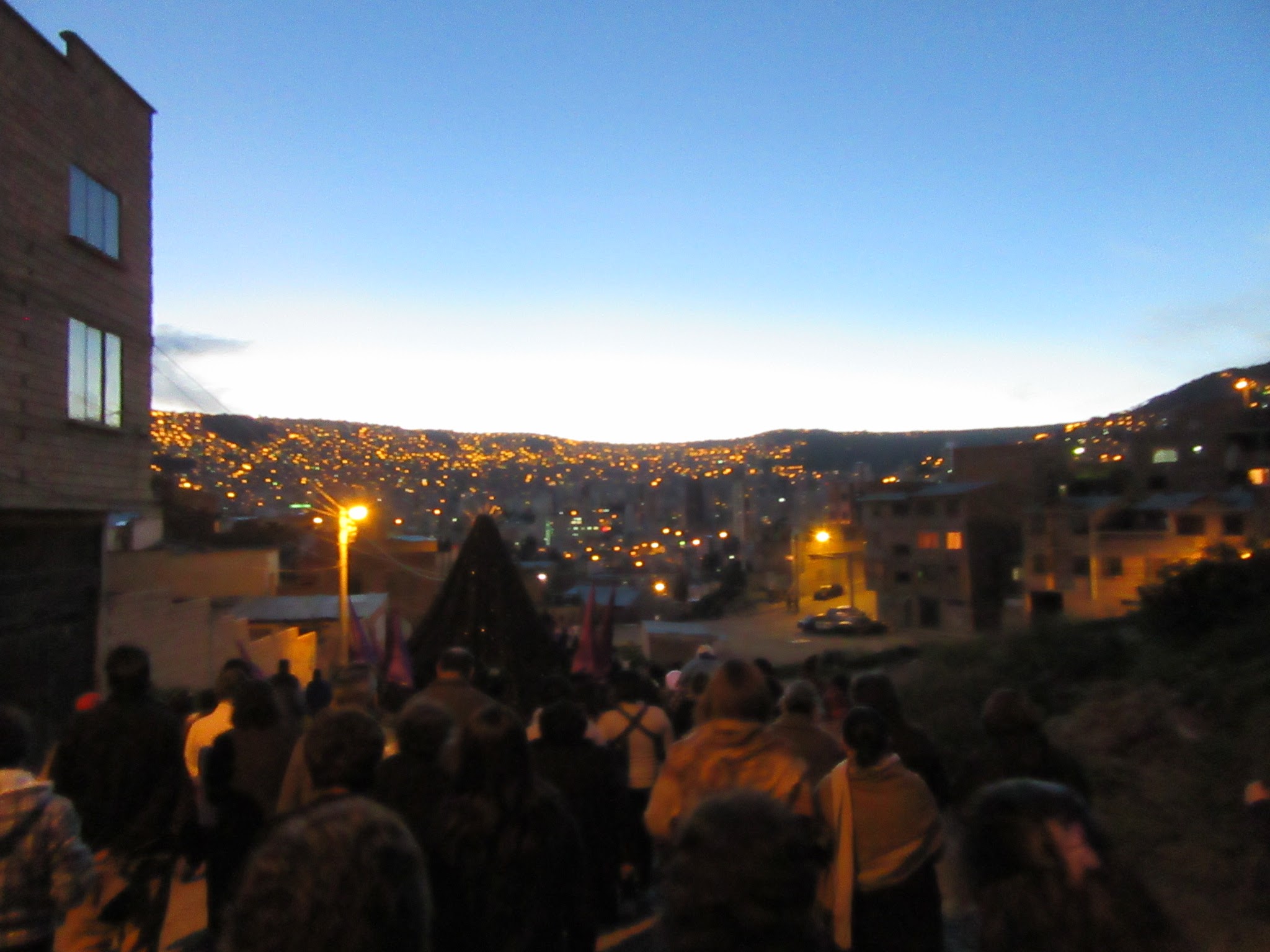
We arrived in La Paz during Holy Week, and I had one goal in mind. I wanted to see a Passion Play, a live action reenactment of the Crucifixion. Eric and I looked everywhere for information and through a combination of gossip and Google translate we uncovered a play on Good Friday in a suburb of La Paz. I was so excited to finally see what I believed would be Catholicism turned up to 11. The play must have never existed or was earlier in the day because instead of a sword and sandal epic, we found ourselves the only foreigners in a small crowd of locals marching behind four icons of Mary and Jesus doing the stations of the cross in different neighborhoods decorated by their residents. It wasn’t the full experience I was looking forward to, yet it felt special and intimate. I was handed some wildflowers by passersby to toss over the statues. As Good Friday is the most somber day in the Christian calendar, dirge-ing around the suburbs of La Paz, with the whole city lit up below us, seemed right.
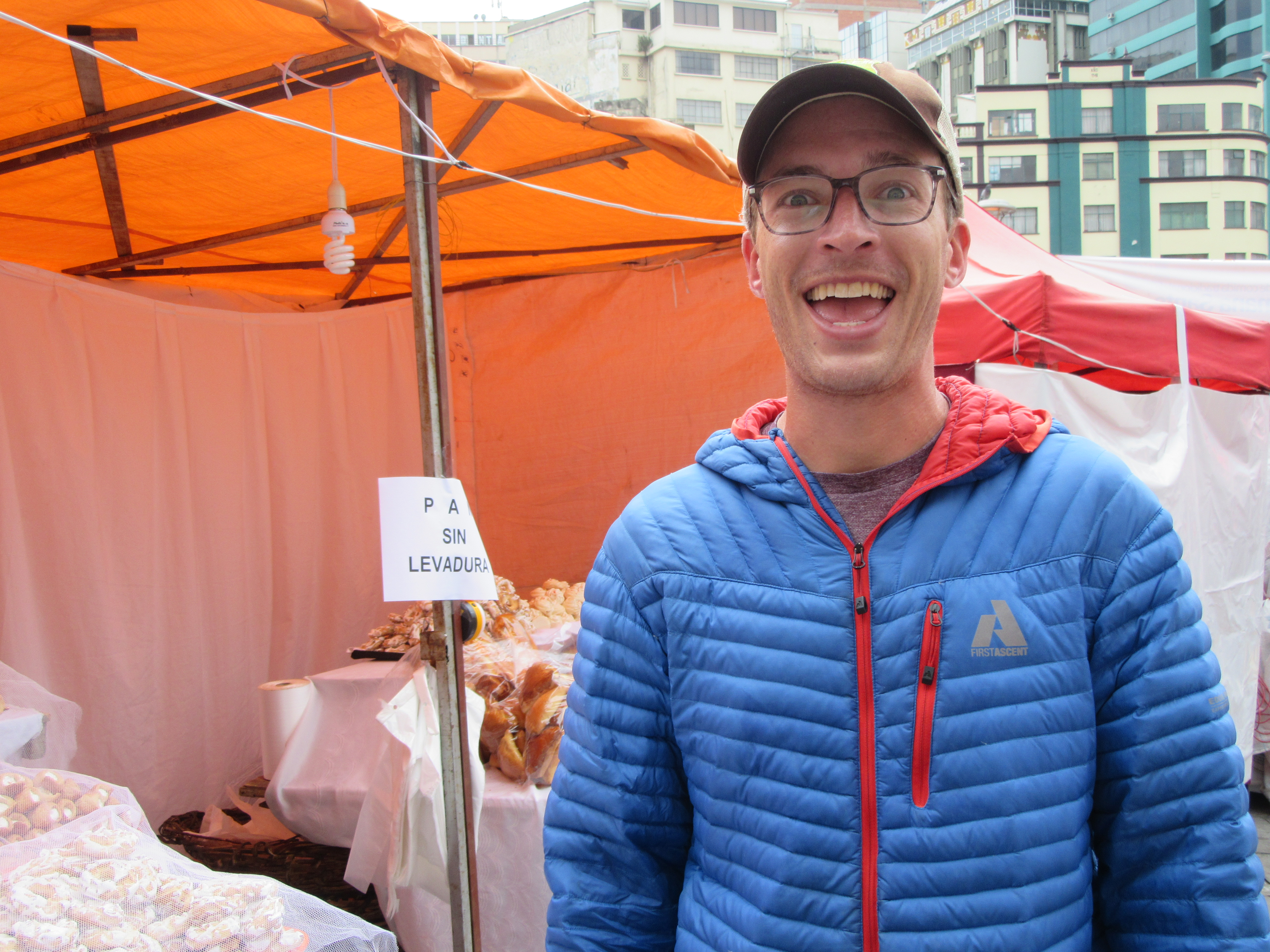
Holy Week is a time of random fireworks, processions and sweets for sale in front of San Sebastian Church. It’s also a terrible time for Passover as cookies and breads are all over the city. You think a country known for potatoes would be easier to celebrate Passover in but I was cranky and hungry the majority of the eight days. Thank God for the humita woman who sold us baked cornbread and steamed, sweet cornflour wrapped in husks for five Bolivianos (80 cents) a pop!
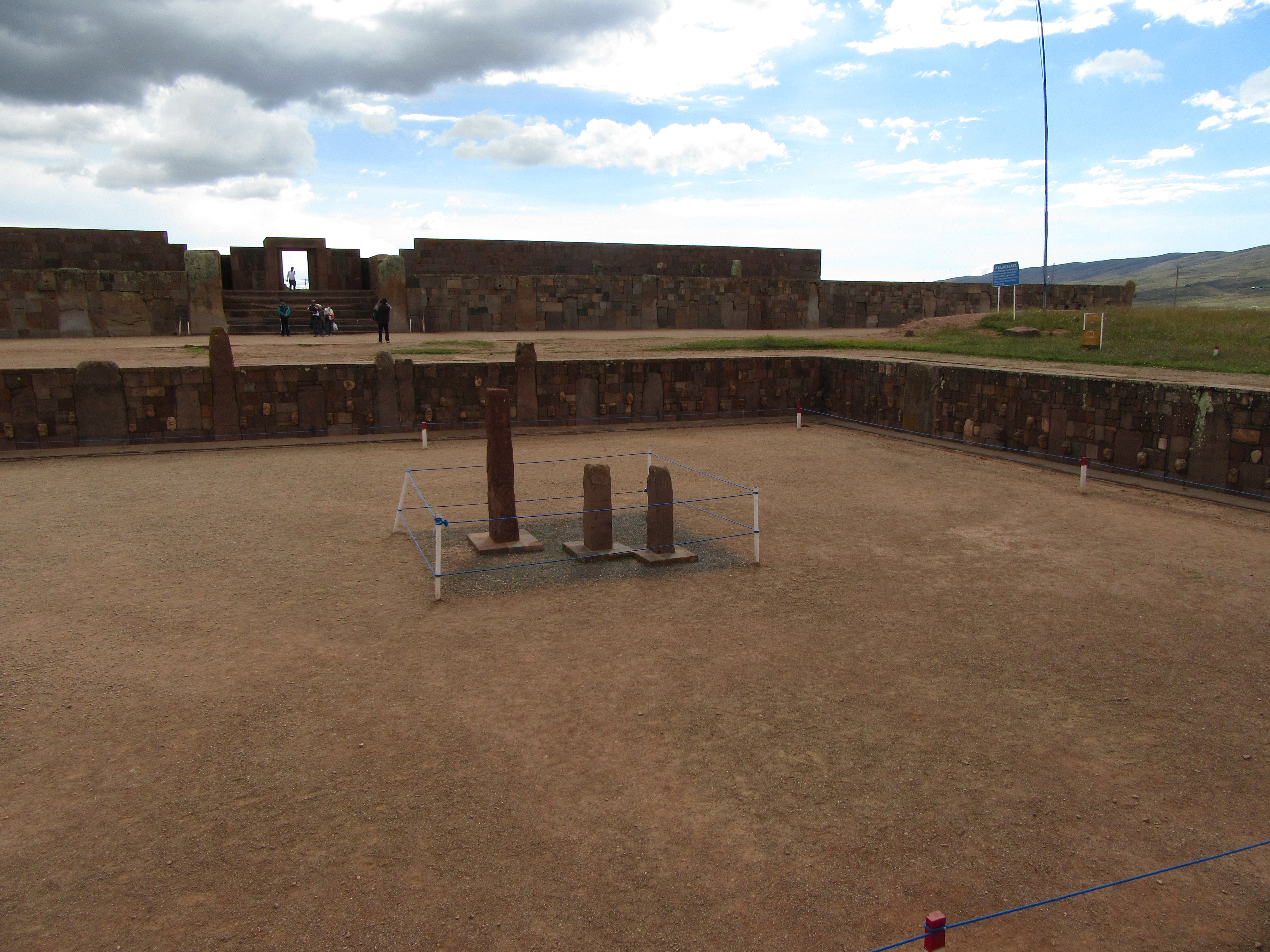
Street eats aren’t the only good deals to be found on the streets of La Paz. Every Thursday and Sunday the upper suburbs of El Alto have one of the largest street markets in the world. Eric and I took the Teleferico (a massive gondola system) up the steep walls of the city and spent hours looking at everything from McDonald’s toys to stolen cell phones. Afterward we closed out our day by native women called “Cholitas” perform staged wrestling acts out of WWE and then descended back into the city on the Teleferico.
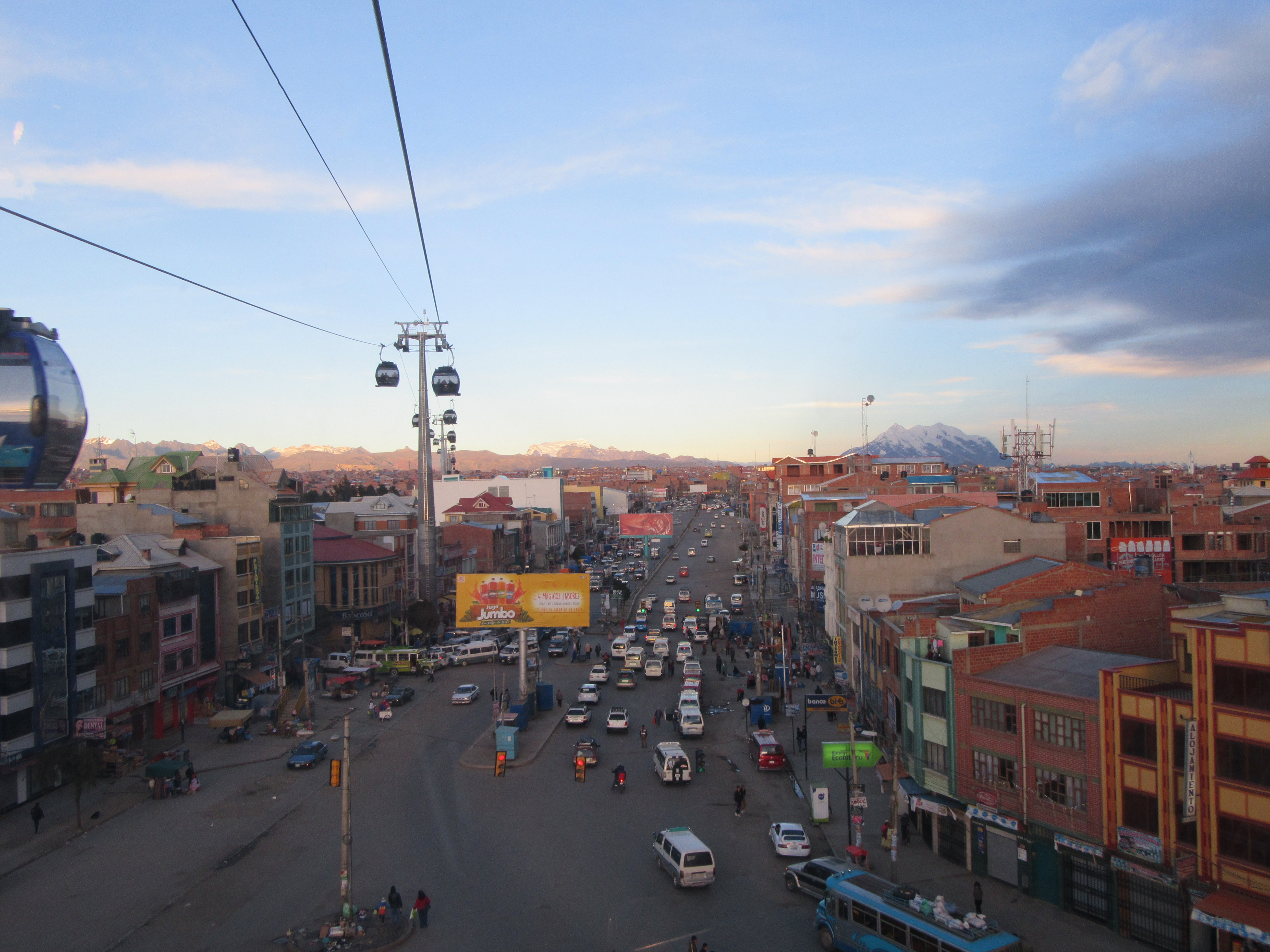
The best parts of La Paz are its mind boggling landscape, frenetic energy and endless warmth of its people. Many travelers I’ve meet hated La Paz, saying it was nothing more than a place gringos go to party. I urge you to discover the city for yourself. Either way, you won’t forget it.
While we couldn’t drink beer the first time in La Paz, when we returned we got to try one of the closest things the city has to a micro-brew, Saya. Saya beer can be found on draft in hostels and in expat bars around La Paz.
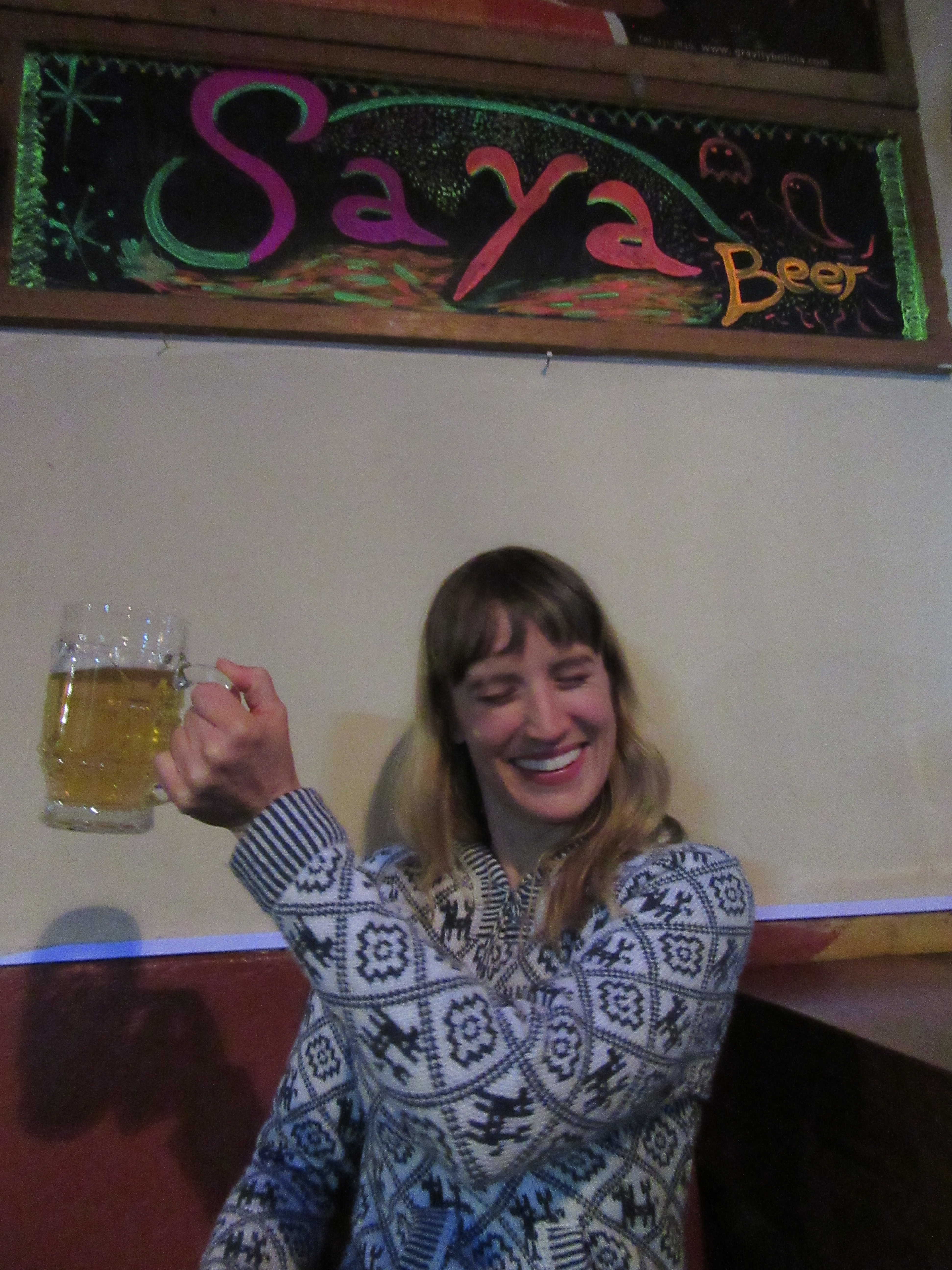
Saya Blonde
Blonde / 5% / ? IBU’s
This was a one note beer. It was so heavy on the banana that it was difficult to taste any other flavors. However, it was a nice break from awful macro lagers and a reminder that beer can taste like something other than stale toilet bowl water.
Final Score: Two out of five times getting hangry at my lack of wheat.
![]()
![]()
![]()
![]()
![]()
Saya Negro
Bock / 7% / ? IBU’s
Another one note beer. All I could taste was roasted grain; it was not a good beer but at least it was a different color than light yellow!
Final Score: One out of five times nearly getting hit by a bus.
![]()
![]()
![]()
![]()
![]()

Be First to Comment